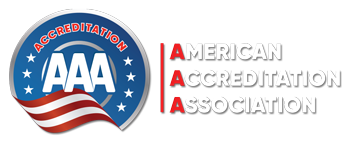Creating a roadmap for the accreditation of inspection bodies involves several key steps to ensure compliance with relevant standards and regulations. Below is a generalized roadmap that can be adapted to various industries and contexts:
- Initial Assessment and Planning:
-
- Identify the regulatory requirements and standards applicable to the inspection bodies in your industry or jurisdiction.
- Determine the scope of accreditation required for the inspection services.
- Assess the resources, expertise, and infrastructure needed for the accreditation process.
- Gap Analysis:
-
- Conduct a gap analysis to identify any deficiencies in the current operations of the inspection body concerning accreditation requirements.
- Document existing procedures, processes, and quality management systems.
- Compare current practices with the requirements outlined in relevant standards or regulations.
- Develop Quality Management System (QMS):
-
- Develop or enhance the QMS to meet the specific requirements of accreditation standards (e.g., ISO/IEC 17020 for inspection bodies).
- Define policies, procedures, and work instructions for inspection activities, including sampling, testing, and reporting.
- Implement document control mechanisms to ensure the latest versions of procedures are used.
- Training and Competence Assessment:
-
- Identify training needs for personnel involved in inspection activities.
- Provide training on relevant standards, procedures, and technical skills.
- Establish a process for assessing and documenting the competence of inspectors.
- Internal Audits:
-
- Conduct internal audits to assess the effectiveness of the QMS and adherence to accreditation requirements.
- Address any non-conformities identified during audits and implement corrective actions.
- Pre-assessment:
-
- Conduct a pre-assessment to evaluate the readiness of the inspection body for accreditation.
- Identify areas for improvement and corrective actions needed before the formal assessment.
- Formal Assessment:
-
- Engage AAA accreditation to conduct a formal assessment of the inspection body.
- Demonstrate compliance with accreditation standards through documentation review, observation of inspection activities, and interviews with personnel.
- Address any findings or non-conformities identified during the assessment.
- Accreditation Decision:
-
- AAA Accreditation Decision Committee will review the assessment findings and determine whether to grant accreditation.
- If granted, the inspection body will receive accreditation certification and be listed on AAA’s directory of accredited organzations.
- Ongoing Compliance and Improvement:
-
- Maintain compliance with accreditation standards through regular internal audits and management reviews.
- Continuously improve the QMS and inspection processes based on feedback, experience, and changes in regulations or standards.
- Renewal and Surveillance:
-
- Renew accreditation periodically as required by the accreditation body.
- Undergo surveillance assessments to ensure ongoing compliance with accreditation standards between renewal cycles.
- Adaptation to Changes:
-
- Stay updated with changes in regulations, standards, and industry best practices.
- Modify the QMS and inspection processes accordingly to maintain compliance and effectiveness.
- Communication and Transparency:
-
- Communicate accreditation status to stakeholders, including clients, regulatory authorities, and the public.
- Provide transparent information about the accreditation process, capabilities, and limitations of the inspection body.
This roadmap provides a structured approach to achieving and maintaining accreditation for inspection bodies, ensuring they meet the required standards for quality and competence in their services.
